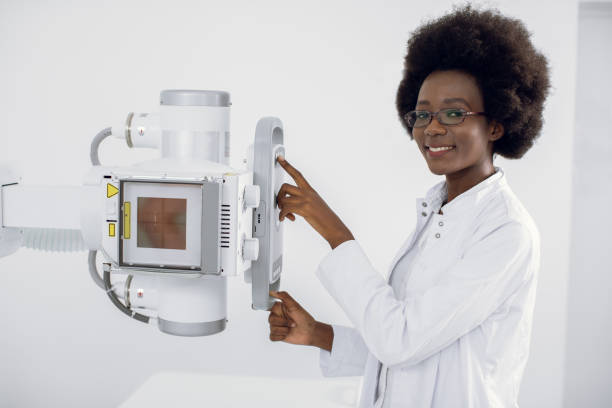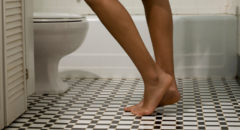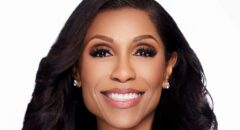
In the United States, Black women have a 40 percent higher death rate from breast cancer than white women, even though they are not more likely to develop the disease. That disparity also accounts for younger women, who are now developing breast cancer more frequently.
This data prompted the U.S. Preventive Services Task Force (USPSTF) to recommend that women begin getting mammograms at age 40. The new guidance can protect many women from developing breast cancer, but do you know exactly what it means?
BlackDoctor.org sat down with Dr. Toma Omofoye, oncologist at The University of Texas MD Anderson Cancer Center, to break down why the new guidelines are important for Black women.
1. What should women, specifically Black women, know about the new guidelines?
The new guidelines emphasize that young women and especially young Black women are developing breast cancer at higher rates.
For Black women, the risk of dying from breast cancer in their 40s is relatively high compared to other racial/ethnic groups, so early detection is crucial.
2. Why are the new guidelines important?
The new USPSTF guidelines encourage average-risk women to begin screening at an earlier ages (age 40). Screening with mammography is an important proven tool for decreasing the risk of dying from breast cancer. Screening allows doctors to find cancers when they are small and easier to treat,
While these recommendations are recent from the USPSTF, many other professional bodies have been recommending for years that screening should begin at 40. In fact, those organizations also recommend that women get a mammogram yearly (not every other year like the USPSTF). Screening early and often saves the most lives.
RELATED: Experts Recommend All Women Get Mammograms Starting at Age 40
3. What prompted the age to be lowered to 40?
Rates of breast cancer in young women is increasing rapidly over the last two decades.
There is already a disproportional mortality rate for Black women when it comes to breast cancer, and later screening could make this situation worse. Black women have higher rates of genetic mutations, aggressive subtypes, dense breasts, delays in diagnosis or treatment… all factors contributing to more deaths. It’s especially important that screening begin earlier in our population.
4. Why is the recommendation only for average-risk women and how does a woman know her risk for developing breast cancer?
For women who are at higher than average risk, we recommend that they begin screening even earlier than 40, screen with more tools than just mammography (such as MRI), and screen more frequently than yearly.
The American College of Radiology emphasizes that all women need to know their risk by age 25. A woman can find out her risk by scheduling a visit with her doctor to discuss her personal and family history.
5. Why are mammograms an important tool for detecting breast cancer in Black women?
A Black woman’s chances of dying from breast cancer are 40 percent higher than a white woman’s. Breast cancer in Black women tends to be detected at later stages when the patient or their physician feels it. As a result of later diagnosis, more extensive treatment is required, and treatment success is lower. The early detection of breast cancer through screening mammography finds early-stage cancers for which treatment is most effective and least aggressive (there is greater than 99 percent success rates in early-stage breast cancer).
6. Many Black women have dense breasts. What would you recommend for them?
For women with dense breasts, we recommend additional screening like a Mammogram with MRI or ultrasound. The mammogram remains an important screening first step.
7. How can women be self-aware of the look/feel of their breasts, and how can they detect if something is abnormal?
Look in the mirror after your shower comparing the look of both sides. Breasts should be mirror images, appearing and feeling similar but not identical (i.e. not twins but sisters). The nipples, outer and inner portions of the breasts should be similar side to side. If something feels off about your breasts or underarm (armpit), don’t talk yourself out of it. Report it to your doctor and get imaging as soon as you can.
8. Are there any breast cancer risk factors women should be aware of that they may not know about?
Family history is important. Often women don’t know that breast cancer in a male relative is a big risk factor. While family history is important, 80 percent of women with breast cancer have no family history.
9. What are the best methods of prevention and treatment for Black women?
Exercise. Maintaining a healthy weight can reduce your risk, but nothing removes your risk. Women with breasts do still develop breast cancer even if they live healthy lifestyles. This is why mammograms are so important.
10. There’s been a lot of mixed information about when and how often a woman should get mammograms. What is your advice on this?
Most lives are saved when average-risk women begin mammograms at 40 and screen yearly. That’s proven by the data and acknowledged by all experts.
11. Can you speak about false positives? Will this be a challenge for women as they start getting mammograms earlier? What is your advice on combating this?
False positives refer to abnormal mammogram results that lead a patient to undergo additional testing and ultimately turn out to be normal. False positives occur in 1 of 10 screening mammograms. The majority of those will be confirmed benign at the time of that additional imaging, only a few will need biopsies to prove the benign nature of the findings. When women are young and having more mammograms there can be more false positives.
However, it is important to note that:
- False positives are relatively uncommon.
- “False positives” do frequently identify issues that need to be addressed. The finding is not a cancer, but it could be another diagnosis that should be treated to reduce a woman’s later risk of developing breast cancer.
- The anxiety caused by false positives is temporary, and for most women, it is worthwhile to have that additional testing and reassurance rather than avoid mammography.
- The risk of missing cancer outweighs the risk of a false positive exam.
12. There’s been a lack of evidence as to when women should stop screening for breast cancer. Do you have any insight or advice on this?
Women should continue to screen for breast cancer if they are healthy enough to undergo treatment. Women are now living longer and staying healthy longer, making it necessary for more of them to continue screening well beyond the age of 74 identified by the USPSTF. Many experts state that when a woman has a lifetime expectancy beyond 10 years and is willing to receive treatment for any breast cancer found, screening mammography can continue to extend her life.








